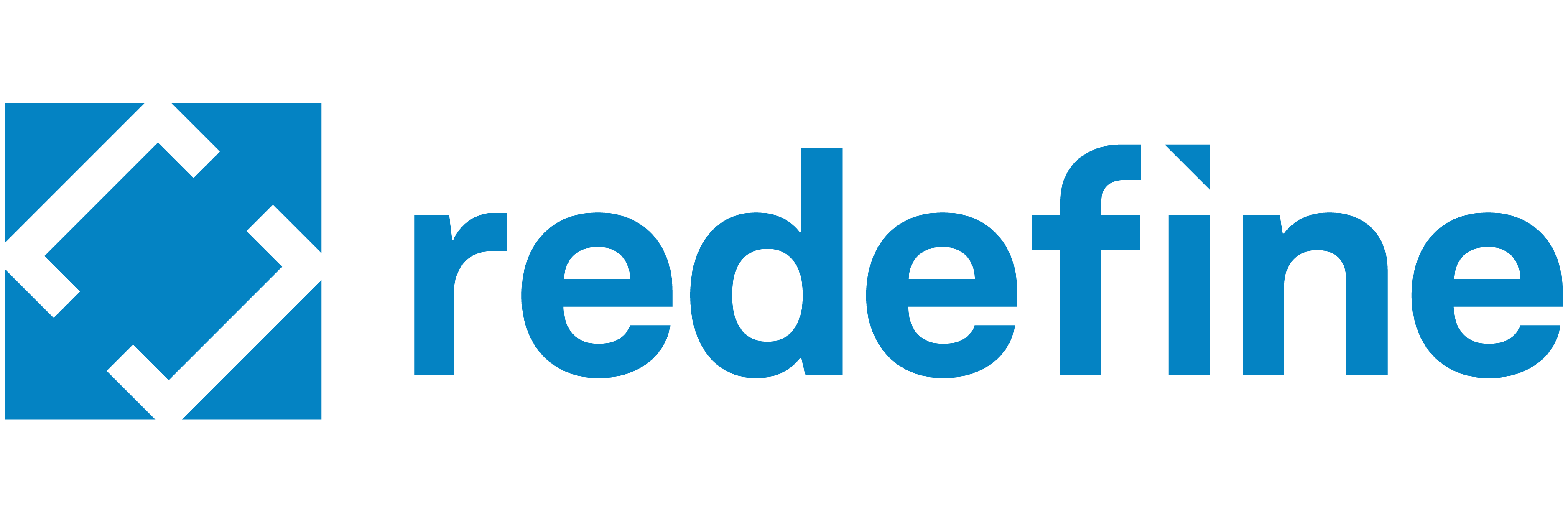Key Takeaways
- SERP stands for “Search Engine Results Page.”
- Google search results used to all look pretty much the same, but in recent years, a host of different features have cropped up to enhance user experience and diversify the SERP landscape.
- Some SERP features can threaten your organic traffic, but others present opportunities for more clicks.
It’s hard to have a conversation about SEO without talking about the Google Search Engine Results Pages – usually shortened to SERPs. When the average user looks at a Google SERP, they see information. But when a digital marketer looks at a SERP, they see challenges and opportunities. Google SERPs are the battleground where every content marketer hopes to win their SEO victories.
Here, we’ll go over the basic anatomy of a Google SERP, how its design affects traffic and clicks, which features you can optimize for and which ones you can’t, plus a few tips for making the SERPs work in your favor.
Anatomy of a Google SERP
In the early days, Google SERPs looked pretty uniform no matter what you searched for. Each page would list about ten “snippets,” or search results. Aside from a few cosmetic changes over the years, these are still the bread and butter of your average SERP. A
One more thing that hasn’t changed? Almost all Google searches end on page 1, making the first page of the SERPs the hottest real estate in digital marketing.

An average search snippet will include the following SEO basics
- a URL
- a page title (or title tag)
- a meta description
Theoretically, the snippets on the first page of the SERPs are there because their titles, meta descriptions, and, most importantly, their actual content have been deemed by Google’s algorithm to be the most relevant to whatever search query the user typed into Google. This is why content marketers are so obsessed with making sure their content targets specific keywords, or search queries.
The top of the page is taken up by a carousel or “pack” of specific types of search results, in this case, recipes. This first result, nestled a bit further down the page, is presented as what we call a “rich snippet.” It differs from classic results in that it contains additional visual information – in this case, an image and a star review for the recipe based on user-submitted information.
These are just two examples of the additional features Google has added to its SERPs that can enhance user experience. While these are helpful for users who want to find the very best of the best, they also impact traffic and clicks by pushing organic search results far down the page.
Below, we’ll break down a few of the most important SERP features and what they mean for organic search.
Paid SERP features
1. Paid ads
The most common type of paid search result is the paid ad. These have been around for years, and look almost identical to regular (organic) snippets, except that they include the label “Ad” or “Sponsored.” In this case, we searched for ‘Italian cooking classes.’
This particular result also includes site links.
How does one show up in sponsored results? Paid search results are determined by a bidding process, in addition to relevance and quality. In other words, the obtainability of an ad placement on Google depends on your marketing budget as much as your ad design.
To learn more about paid ads on Google, check out An Introduction to Google Ads.
2. Shopping results
If Google determines that you’re searching for a product – for example, if you search something like “French door refrigerators” – it will display shopping results. These are “packs,” or carousels of products with rich features – pricing and star reviews, similar to the recipes – usually determined by a bidding process. In other words, these, too, are ads and sponsored results, and Google helpfully labels them as such. Landing a Google shopping result requires similar budgeting and planning to paid ads.
As you can see, Google also allows a user to narrow their search down by other factors that the search engine has determined are important to shoppers for this particular product – size, color, counter depth, and certain features. Selecting any of these will narrow down search results to ones that have been identified as the most relevant:
Organic SERP features
Organic search is where a lot of the magic happens in SEO and what a page will show up as without paid assistance. As Google’s enigmatic algorithm updates develop more and more features to show information to users in the fastest, most efficient way, it’s imperative that SEO teams understand how these features affect traffic and clicks, and which keywords lead to which kinds of features.
As mentioned, some of these features present opportunities for content marketers, while others make it harder for users to find your pages even if they rank highly.
1. Featured snippets
Featured Snippets sit at the top of a SERP and contain content that efficiently and directly answers a search query. They’re most often seen on searches that are posed as a question.
There are four different types of featured snippets: paragraphs, bulleted or numbered lists, tables, and videos. Paragraphs are the most common type, but all four are worth reaching for.
At RMG, we’re pretty big fans of the featured snippet. While this valuable SERP feature can threaten your traffic if someone else has a featured snippet on the page you rank for – therefore pushing your result further down the page – landing a Featured Snippet yourself can be a boon to your traffic. Moz and other experts agree that Featured Snippets lead to higher CTR than regular snippets.
How to get a featured snippet
So, how do you snag a Featured Snippet? There’s no guaranteed, surefire way to get one, even with the most optimized content. However, there are a few ways you can bolster your chances.
First, make sure there’s at least one portion of your content that very clearly answers the search query you’re targeting, ideally with a bulleted or numbered list or a clear definition containing the target keywords. This answer should be concise, and kept to about three sentences.
Second, try aiming for featured snippets centered around keywords your page is already ranking highly for. Find pages that are ranking in the top ten positions, especially ones that might already have a #2-#5 placement, and see if you can find a way to optimize that content around a featured snippet.
2. Direct answer boxes
Direct answer boxes look somewhat similar to Featured Snippets. They’re at the top of the SERP for user convenience, pushing other results a little farther down the page. However, unlike featured snippets, they don’t link to a particular page. This is the kind of result you’d get if you search for information about the weather or what time the sun sets in your city:
As you can see, this isn’t the kind of search result you want to be going for if your goal is to gain traffic and clicks. It’s helpful to users, but there’s not much that a marketing team can do with it.
3. Knowledge panels
Certain types of searches will result in Knowledge Panels. Knowledge panels are a sort of “card” of information and rich features that appear on the right-hand side of the SERP. This is common with searches of celebrities, some notable media properties, historical figures, or famous companies or organizations. Usually, the card in a knowledge panel will point to Wikipedia, but not always.
Information in Knowledge Panels can be pulled from your web page and other content. Therefore, theoretically, if you have been putting SEO best practices to use all through a fully optimized site, there’s a chance your site will appear in the Knowledge Panel for branded searches.
4. Local packs
Google knows when you’re doing a local search. That’s why if you search for “korean food los angeles,” you’ll probably get a local pack of local Korean restaurants in your search results. The ever-handy local pack consists of a ‘pack’ of results in the area, often for restaurants, stores, or hotels. The results have rich results, giving users a quick reference for reviews, hours, location, and/or contact information.
How to rank in the local pack
Optimizing your site for local SEO can be a challenge, but a few places you can start include ensuring that your address, phone number, and website details are correct sitewide. Additionally, bolstering and frequently updating your Google Business Profile is a huge step toward landing a spot in the local pack.
5. Images
One of Google’s standard features is the ability to filter searches by category: you can search specifically for News, Videos, Images, and more. But Google will try to answer your search query in the best way possible, so sometimes you’ll get different types of results under “All” even if you haven’t filtered them. This is the case with Google Image results.
If you perform a regular Google search for, say, “Hebrides” – a group of islands off the coast of Scotland – you can scroll down the SERP to see an image carousel of the islands along with helpful information about weather and flight time.
These image results used to be quite far down the page, after Sitelinks from the Hebrides’ Wikipedia page, a Knowledge Panel, a People Also Ask section (more on that below), Top Sights results, and Video results. However, recent updates have shifted things, bringing these verdant sights right to the forefront. This is a perfect example of a query whose SERP is crowded with special features. If you’re trying to rank for “Hebrides,” good luck!
Google Image results can also show up accompanying the usual search snippet if the search engine has determined that a result is relevant enough.
It’s an appealing, eye-catching feature that can lead curious eyes right to your link. Paired with a strong title and meta description, this could make for a powerful tool to bolster click-through rate.
How to show up in Google Image results
So, how do you show up in Google Image results? Like text-based content, images have their own SEO rules. Following those guidelines means optimizing the file name, file type, and file size, making sure the image is of high quality and relevance, and optimizing image structured data (like alt tags) so that Google can crawl it and actually “understand” what it is. As always, for accessibility, don’t neglect proper alt text on images that need it.
6. Videos
Like with images, if Google ascertains that the answer to your search query would best be answered by a video, you’ll get video search results. These are pulled mostly from YouTube and can show up if you search for a specific video – like the newest Harry Styles music video – or for something general, like “how to change the oil in my car.” Aside from media (like searching for a music video or clip from a show,) most queries that turn up with video results are of an informative, tutorial nature – questions that start with ‘how to.’
How can you make sure your video shows up in Google’s video results? As usual, it starts with optimizing your video content for SEO with the proper use of structured data. Learn more about video optimization for SEO with our blog on the subject.
7. Other SERP features
The SERP features mentioned above are some of the most common, most attainable, and/or most relevant to the average SEO. However, there are a few others we think are worth highlighting, even if they shouldn’t be prioritized in your content strategy.
People Also Ask
By now, virtually all SEOs and most casual Google users are aware of the People Also Ask feature. This consists of questions related to the original search query, which usually show up between other search results somewhere in the middle of the SERP.
Under each question is a drop-down result pulled from an existing page. Like normal snippets, these pages have been identified by Google as providing relevant, quality answers to the given search query. In that regard, being featured as one of these snippets comes down to the same SEO practices you would use if aiming for a Featured Snippet or regular search ranking.
People Also Ask questions can function as great long-tail keywords to target in your content strategy, or for building out a sitewide FAQ section.
Sitelinks
Sometimes, a result will contain specific sections of a larger page – also known as Sitelinks. This was the case with the SERPs for “Italian cooking classes” above, in which the first result was the Hebrides Wikipedia page with several sub-sections of the page featured as unique links.
This list of links may present itself collapsed, like this, or laid out in a larger display as with the cooking classes result. Because the page for the Hebrides result is so crowded, Google’s likely compacted this result down for convenience.
Sitelinks are also a common result type for branded searches. This means that if your site uses good SEO practices that provide a solid, crawlable site structure, you have a good chance of showing up in a Sitelink result for branded searches.
Top Stories
Search queries related to current events or newsworthy topics will often result in Top Stories, which are similar to the types of results you would get if you performed a News search. Indeed, these results must be Google News approved. That means it’s virtually impossible to show up in the Top Stories unless you are an established news publisher.
Why SERPs are important to SEO
We’ve already touched on the importance of SERPs for SEO in this post, but it bears underlining: SERPs determine how a site shows up on Google’s first page once they’ve landed that top-ten spot. Certain SERP features can have a massive impact on what a user clicks through on.
If you’ve landed a featured snippet, people-also-ask, or any of these SERP items, then you can analyze what was done right on that page and use it to influence marketing efforts on others.
It can also serve as a call to action for a digital marketing team to step up their game. For example, if you’ve managed to nab a first-page spot on the perfect keyword for your blog post. While that’s great for visibility, the SERP for that keyword might have a feature that is pushing your result further down, taking the click-through rate with it.
When this happens, take it as an opportunity to improve the blog post and try to nab that feature. It could be through taking some original pictures to add to the post, adding a video, or answering a question in a concise way.
Knowing the lay of the land
As you can see, some SERP features are more attainable than others for the average SEO. But no matter what, it’s important to know what types of queries result in what types of SERP features so that you understand the lay of the land when trying to rank for certain terms. SERP features make Google more useful and informative for users, but they change the “real estate” market of SERPs in ways SEOs need to be aware of.
Have questions about SEO, Google, or content marketing? Get in touch with the Redefine team and we’ll be happy to let you pick our brains.





